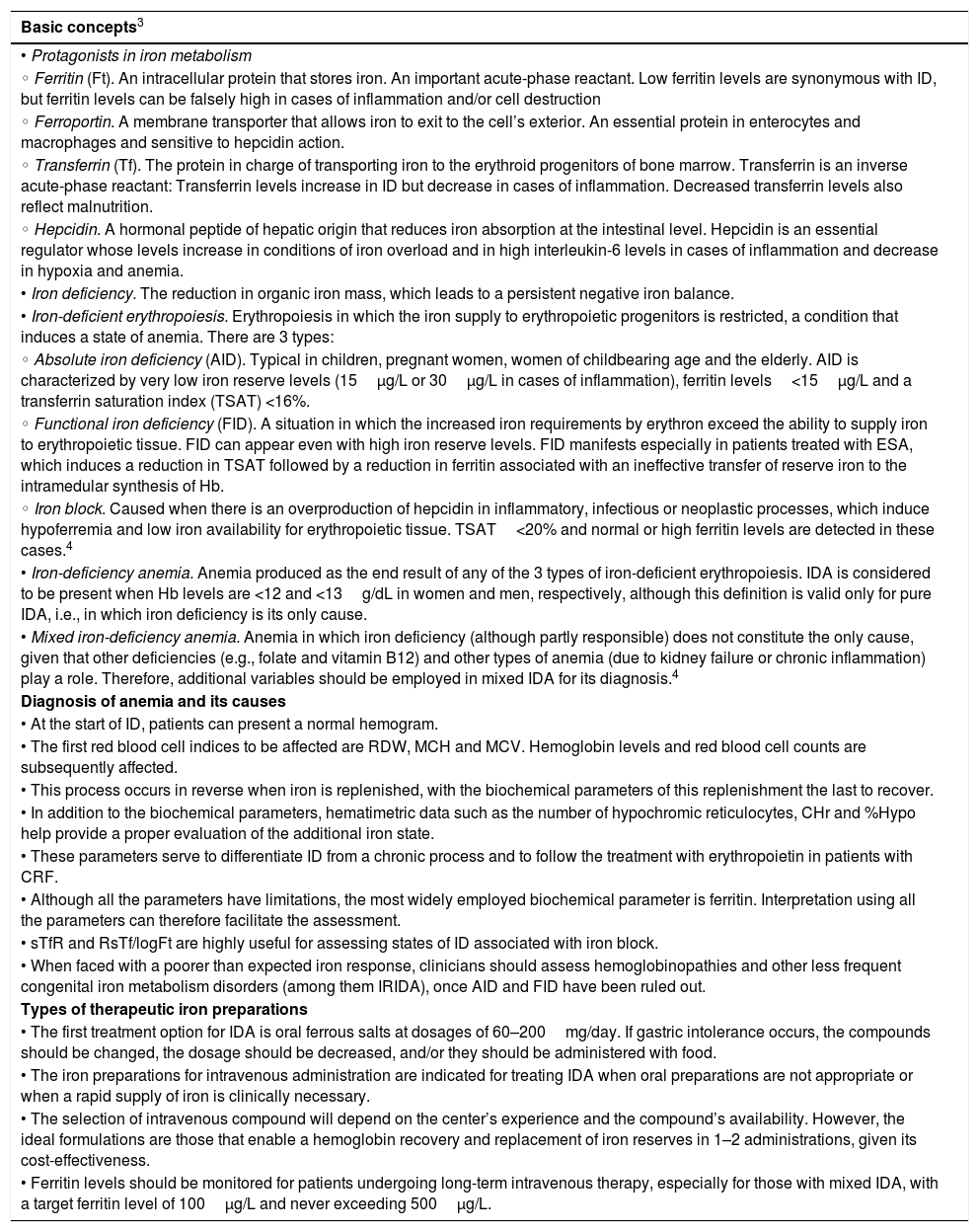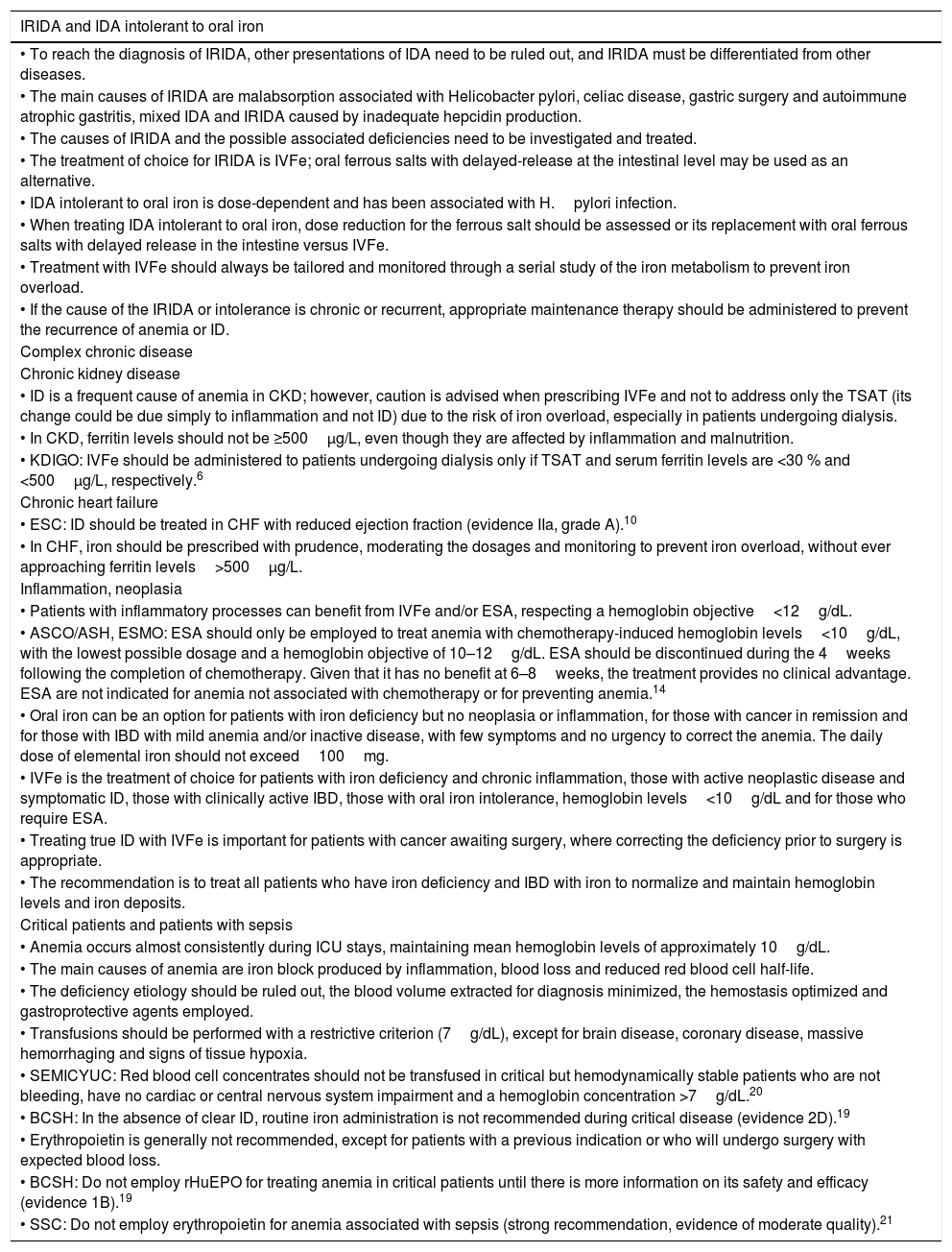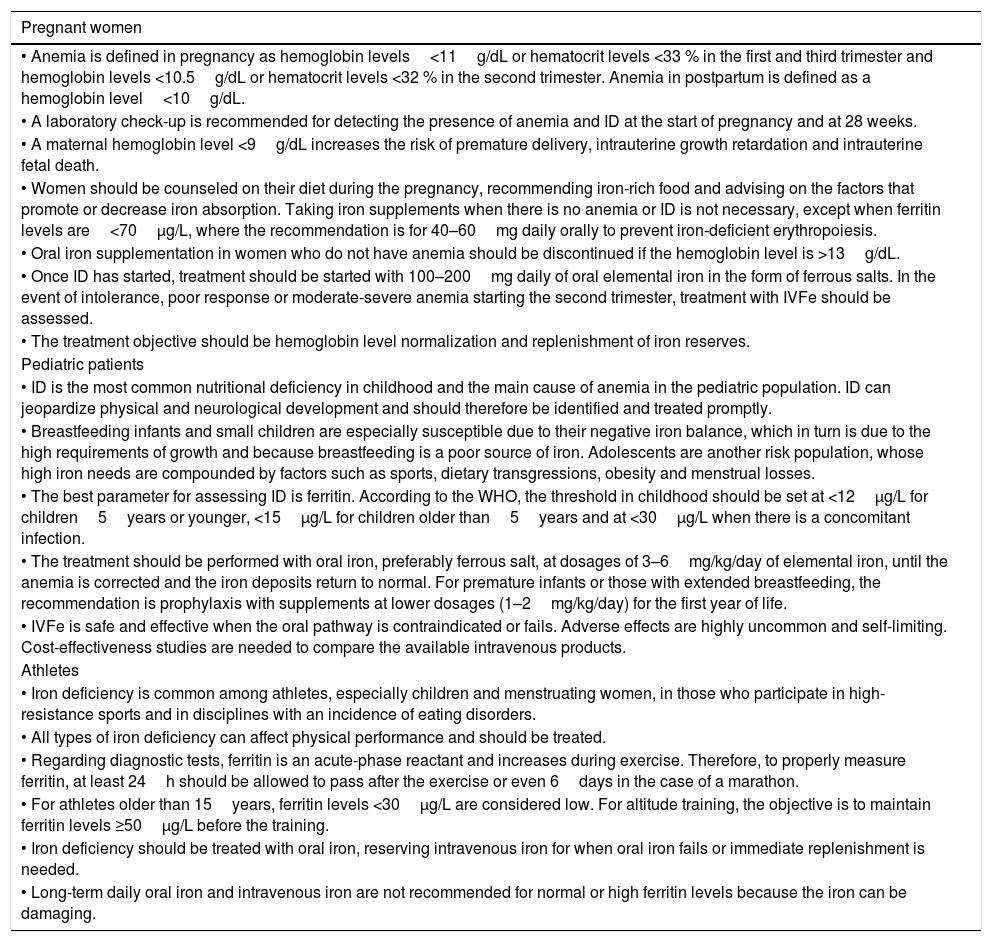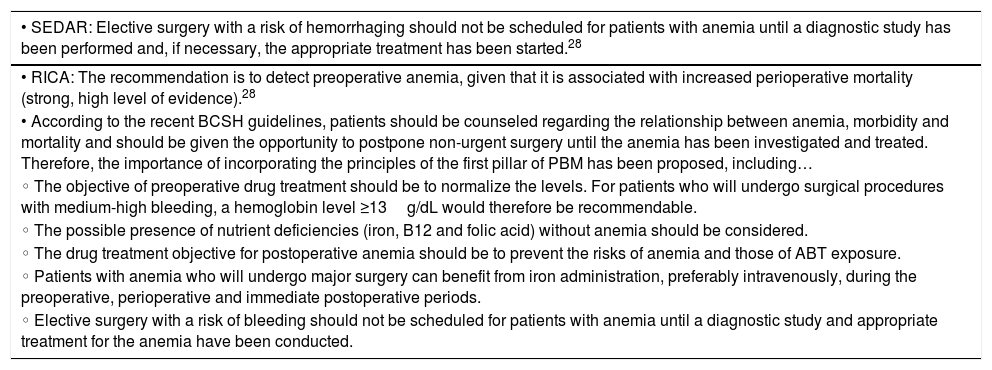Iron deficiency (ID) due to blood loss, absorption disorders and dietary deficiencies causes iron-deficiency anaemia, whose treatment seeks to eliminate the underlying cause and restore haemoglobin and iron deposits. Typically, the latter 2 of these objectives can be achieved through oral iron therapy. Intravenous iron administration (IIA) should be limited to those patients refractory or intolerant to oral preparations or who require rapid repletion. The indiscriminate use of IIA can increase morbidity and mortality due to iatrogenic overload. This fact, coupled with the growing popularity of IIA and the lack of reference guidelines in Spanish, led the Spanish Erythropathology Group of the Spanish Society of Haematology and Haemotherapy to develop this study, which presents the main recommendations on the optimal use of IIA in ID and attempts to constitute reference guidelines on good practices for the clinical management of these conditions.
El déficit de hierro (DH) a consecuencia de pérdidas de sangre, trastornos de absorción y/o carencias dietéticas, originan anemia ferropénica (AF), cuyo tratamiento persigue eliminar la causa subyacente, y restaurar la hemoglobina (Hb) y los depósitos de hierro. Habitualmente, los dos últimos objetivos pueden conseguirse mediante ferroterapia oral. El hierro de administración endovenosa (FEEV) debe limitarse a aquellos sujetos refractarios o intolerantes a los preparados orales, o que requieran una repleción rápida. Su utilización indiscriminada podría incrementar la morbimortalidad por sobrecarga iatrogénica. Este hecho, unido a la creciente popularidad del FEEV y a la carencia de guías de referencia en nuestro idioma, condujo al Grupo Español de Eritropatología de la Sociedad Española de Hematología y Hemoterapia a elaborar este trabajo que recoge las principales recomendaciones acerca del uso óptimo del FEEV en los DH, y pretende constituir una guía de referencia de buenas prácticas para el manejo clínico de estas situaciones.
Article
Diríjase desde aquí a la web de la >>>FESEMI<<< e inicie sesión mediante el formulario que se encuentra en la barra superior, pulsando sobre el candado.

Una vez autentificado, en la misma web de FESEMI, en el menú superior, elija la opción deseada.

>>>FESEMI<<<











